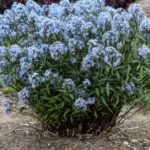Garlic is a versatile and beloved ingredient in many cuisines worldwide. Whether you grow it for its culinary uses, its health benefits, or simply for the joy of gardening, knowing when to harvest garlic is crucial for achieving the best flavor and storage quality. In this comprehensive guide, we’ll explore everything you need to know about how and when to harvest garlic, from understanding different varieties to recognizing the signs of readiness and tips for curing and storing your harvest.
Table of Contents
ToggleKnow Your Varieties
Garlic comes in several varieties, each with its own unique characteristics and growing requirements. Understanding the differences between these varieties can help you determine when to harvest them.
1. Hardneck
Hardneck garlic varieties, as the name suggests, have a hard central stalk that produces a flowering scape. These scapes are often harvested before the bulbs to encourage larger bulb development. Hardneck garlic tends to have fewer, but larger cloves, and it’s known for its robust flavor.
Some popular hardneck garlic varieties include:
- Rocambole: Known for its rich, complex flavor, Rocambole garlic is a favorite among chefs and garlic enthusiasts alike.
- Porcelain: With its large, easy-to-peel cloves and mild flavor, Porcelain garlic is a popular choice for culinary use.
- Purple Stripe: This variety is prized for its beautiful purple-striped bulbs and strong, spicy flavor.
2. Softneck
Softneck garlic varieties have a soft, flexible stalk and do not produce a flowering scape. Instead, they typically produce multiple layers of cloves in a bulb and often have a longer storage life than hardneck varieties. Softneck garlic is well-suited for braiding and is often preferred for its milder flavor.
Some common softneck garlic varieties include:
- Artichoke: Artichoke garlic is known for its large, easy-to-peel cloves and mild flavor. It’s a popular choice for roasting and sautéing.
- Silverskin: Silverskin garlic is prized for its long storage life and strong, pungent flavor. It’s commonly used for making garlic powder and other preserved garlic products.

Now that you’re familiar with the main types of garlic, let’s move on to understanding when to harvest them.
Consider the Time of Year
Garlic is typically planted in the fall and harvested in the summer, although the exact timing can vary depending on your location and climate. In general, garlic is ready for harvest when the lower leaves begin to turn yellow and dry. This is usually several weeks after the scapes have been removed, allowing the bulbs to reach their full size.
For hardneck garlic varieties, harvesting usually occurs in late spring to early summer, while softneck varieties are harvested a bit later, in mid to late summer. Keep an eye on the weather forecast, as harvesting is best done on a dry day to minimize the risk of rot and mold.
Know when to harvest garlic by leaves
One of the most reliable indicators of garlic readiness is the condition of its leaves. Here’s how to interpret what the leaves are telling you:
- Yellowing and Browning: As garlic approaches maturity, the lower leaves will begin to turn yellow and then brown. This is a sign that the plant is redirecting its energy from leaf growth to bulb development.
- Dying Back: Eventually, the lower leaves will die back completely, leaving only a few green leaves at the top of the plant. This is the signal that the bulbs are fully mature and ready to be harvested.
Pro Tip: If you’re unsure whether your garlic is ready for harvest, you can always gently dig up a bulb to check its size and condition. If the cloves are fully formed and the outer skin is papery, it’s time to harvest.
When to Harvest Garlic Bulb Harvest Tips
When harvesting garlic, it’s essential to handle the bulbs carefully to avoid bruising or damaging them. Here are some tips for a successful harvest:
- Loosen the Soil: Use a garden fork or shovel to loosen the soil around the bulbs, being careful not to pierce or damage them.
- Lift Gently: Lift the bulbs out of the soil gently, shaking off any excess dirt.
- Leave the Tops On: Leave the tops of the garlic intact to help protect the bulbs during curing.
- Avoid Washing: Resist the urge to wash the bulbs, as this can promote rotting. Instead, gently brush off any dirt with your hands or a soft brush.
Once you’ve harvested your garlic, it’s time to prepare it for storage.
Curing and Storing
Curing is the process of drying garlic to improve its flavor and prolong its storage life. Here’s how to cure and store your garlic harvest:
- Hang to Dry: Bundle the garlic bulbs together and hang them in a warm, dry place with good air circulation, such as a garage or shed. Allow them to cure for 2-3 weeks, or until the outer skins are dry and papery.
- Trim the Tops: Once the bulbs are fully cured, trim off the tops and roots, leaving about an inch of stem attached.
- Store in a Cool, Dry Place: Store your cured garlic bulbs in a cool, dry place with good ventilation, such as a pantry or cellar. Avoid storing them in the refrigerator, as this can cause them to sprout prematurely.
By following these steps, you can enjoy the flavor of your homegrown garlic for months to come.
Harvesting Scapes
Scapes are the curly flower stalks that hardneck garlic plants produce in early summer. While it may seem counterintuitive, harvesting scapes actually encourages larger bulb growth by redirecting the plant’s energy away from flower production.
To harvest scapes, simply snap them off where they emerge from the main stem. Scapes can be used in a variety of culinary applications, including pesto, stir-fries, and grilled dishes.
Harvesting Spring Garlic
Spring garlic, also known as green garlic or young garlic, is harvested in the spring before the bulbs have fully matured. Spring garlic has a milder flavor and tender texture, making it ideal for use in salads, soups, and other fresh dishes.
To harvest spring garlic, simply pull up the plants when the leaves are still green and tender. Trim off the roots and any tough outer layers, and use the entire plant in your favorite recipes.
Reap the Rewards
Harvesting garlic is a rewarding experience that allows you to enjoy the fruits of your labor throughout the year. Whether you’re a seasoned gardener or just starting out, growing garlic at home is a satisfying and flavorful endeavor. By following these guidelines, you’ll be well on your way to a When to Harvest Garlic harvest and delicious meals to share with family and friends.





